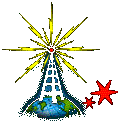|
Notes Brief Introduction to Tuina
1. Brief Introduction to the Development of Tuina of TCM
2. An Outline of Tuina Schools of TCM
3. The Way to Master tuna of TCM
4. Brief Introduction to the Principle for TCM's Tuina to Work
5. Brief Introduction to the Modern Researches in Tuina Manipulation
Part One: Adult Tuina
1. Brief Introduction to Adult Tuna
1.1 Characteristics of Manipulations and Point-selection of Adult Tuina
 1.2 Commonly Used Mediums For Adult Tuina 1.2 Commonly Used Mediums For Adult Tuina
1.3 Points for Clinical Attention in Adult Tuina
1.4 Indications of Adult Tuina
1.5 Containdications of Adult Tuina
2 . Commonly Used Manipulations for Adult Tuina
2.1 Yizhichan Tui (operate/operating with one thumb)
2.2 Na (grasp/grasping)
2.3 An (press/pressing)
2.4 Mo (palm-rub/rubbing)
2.5 Rou (knead/kneading)
2.6 Dian (Digital-press/pressing)
2.7 Ca (rub/rubbing)
2.8 Gun (roll/rolling)
2.9 Zhen (vibrate/vibrating)
2.10 Cuo (do/doing
foulage)
2.11 Mo (wipe/wiping)
2.12 Tina (lift-grasp/grasping)
2.13 Anrou (press-knead/kneading)
2.14 Boyun (forearm-knead/kneading)
2.15 Ji (beat/beating)
2.16 Pai (pat/patting)
2.17 Dou (shake/shaking)
2.18 Yao (rotate/rotating)
2.19 Ban (pull/pulling)
2.20 Bashen (pull-extend/extending)
3. Methods and Steps for Training Manipulations
3.1 Practice on a Bag Filled with Rice
3.2 Practice on the Human Body
3.3 Pracatice through Routine Performance in Treating
4. The Fourteen Channels and the Commonly Used Acupoints
4.1 An outline of the Fourteen Channels
4.2 An Outline of the Acupoints
4.3 Introduction to the Fourteen Channels and Commonly Used Points and Tuina
Manipulations
4.4 Commonly Used Extraordinary Points and the Tuina manipulations Performed
on Them
5. Exercises as the Basic Training of Manipulations
5.1 Yijinjing
5.2 Shaolinneigong
5.3 Points for Attention in Doing Exercises
6 Treatment of Common Adult Diseases
6.1 Common Cold
6.2 Headache
6.3 Insomnia
6.4 Diarrhea
6.5 Epigastralgia
6.6 Hemiplegia due to Apoplexy
6.7 Flaccidity Syndrome
6.8 Arthralgia-syndrome
6.9 Hypertension
6.10 Hiccup
6.11 Uroschesis
6.12 Constipation
6.13 Angina Pectoris
6.14 Colicky Pain of the Gall-bladder
6.15 Mastitis
6.16 Dysmenorrhea
6.17 Postpartum General Aching
6.18 Postpartum General Aching
6.19 Toothache
6.20 Pharyngitis
6.21 Dislocation of Tendon of Long Head of Biceps Brachii
6.22 Tenosynovitis of Long head of Biceps Brachii
6.23 Tendinitis of Supraspinatus Muscle
6.24 Sub-acromial bursitis
6.25 External Humeral Epicondylitis
6.26 Medial Humeral Epicondylitis
6.27 Sprain of the Wrist Joint
6.28 Carpal Tunnel Syndrome
6.29 Injury of Medial Collateral Ligament of Kee Joint
6.30 Sprain of the Ankle Joint
6.31 Tarsal Tunnel Syndrome
6.32 Sprain of Achilles Tendon
6.33 Scapulohumeral Periarthritis
6.34 Disturbance of Costovertebral Joints
6.35 Cervical spondylopathy
6.36 Stiffneck
6.37 Disturbance of Lumbar Vertebral Facet Joints
6.38 Acute Lumbar Sprain
6.39 Syndrome of the Third Lumbar Vertebral Transverse Process
6.40 Chronic Strain of Lumbar Muscle
6.41 Prolapse of Lumbar Intervertebral Disc
7. Adult Tuina for Health-care
7.1 Health-care of the Head, Face and the Five Sense Organs
7.3 Health-care of the Chest and Abdomen
7.4 Health-care of the Neck, Back and Waist
Part Two: Infant Tuina
8. Brief Introduction to Infant Tuina
8.1 An Outline of Infant Tuina
8.2 Relevant Knowledge of Infant Tuina
9. Manipulations for Infant Tuina
9.1 Tui (Push / pushing)
9.2 An (press/ pressing)
9.3 Mo (rub/rubbing)
9.4 Qia (nip/nipping)
9.5 Rou (knead/kneading)
9.6 Yun (arc-push/pushing)
9.7 Nie (pinch/pinching)
9.8 Fen (laterally-divided push/pushing)
9.9 Dao (pound/pounding)
10. Commonly Used Points in Infant Tuina
10.1 Points on the Head and Neck
Tianmen Kangong Taiyang Erhougaogu Baihui Yintang
Shangen Shuigou Chengjiang Fengchi Yaguan Tianzhugu Xinmen
10.2 Points on the Chest and Abdomen
Tiantu Sanzhong Rugen Rupang Zhongwan Xielei Shenque Tianshu Fu Fuyinyang
Dujao Dantian
10.3 Points on The back
Dazhui Feishu Fengmen Yaoshu Pishu Shenshu Qijiegu Guiwei Jizhu
10.4 Points on the Upper Limbs
Pijing Weijing Ganjing Xinjing Feijing Shenjing
Sihengwen Xiaohengwen Dachang Xiaochang Shending
Shenwen Zhangxiaohengwen Zongjin Banmen Dahengwen
Yunshuirutu and Yunturushui Neilaogong Neibagua
Xiaotianxin Shixuan Laolong Ershanmen Zuodanzheng youduanzheng Errenshangma
Yiwofeng Wailaogong Boyangchi Sanguan Tianheshui Liufu
10.5. Points on the Lower Limbs
Jimen Baichong Zusanli Weizhog Houchenshan Qianchengshan Sanyinjiao Jiexi
Yongquan Pucan
11. Treatment of Common Infantile Diseases
11.1 Fever
11.2 Cold
11.3 Cough
11.4 Asthma
11.5 Anorexia
11.6 Morbid Night Crying
11.7 Constipation
11.8 vomiting
11.9 Diarrhea
11.10 Proctoptosis
11.11 Malnutrition
11.12 Abdominal Pain
11.13 Uroschesis
11.14 Enuresis
11.15 Thrush
11.16 Myopia
11.17 Rickets
11.18 cerebral Palsy
11.19 Myogenic Torticollis
12 Infant Tuina for Health-care
12.1 Infant Tuina for Calming the Mind
12.2 Infant Tuina for Strengthening the Spleen and Regulating the Stomach
12.3 Infant Tuina for Strengthening the Spleen to Reinforce the Lung
12.4 Infant Tuina for
Improving Intelligence and Building up health
The
English-Chinese Encyclopedia of Practical TCM
|